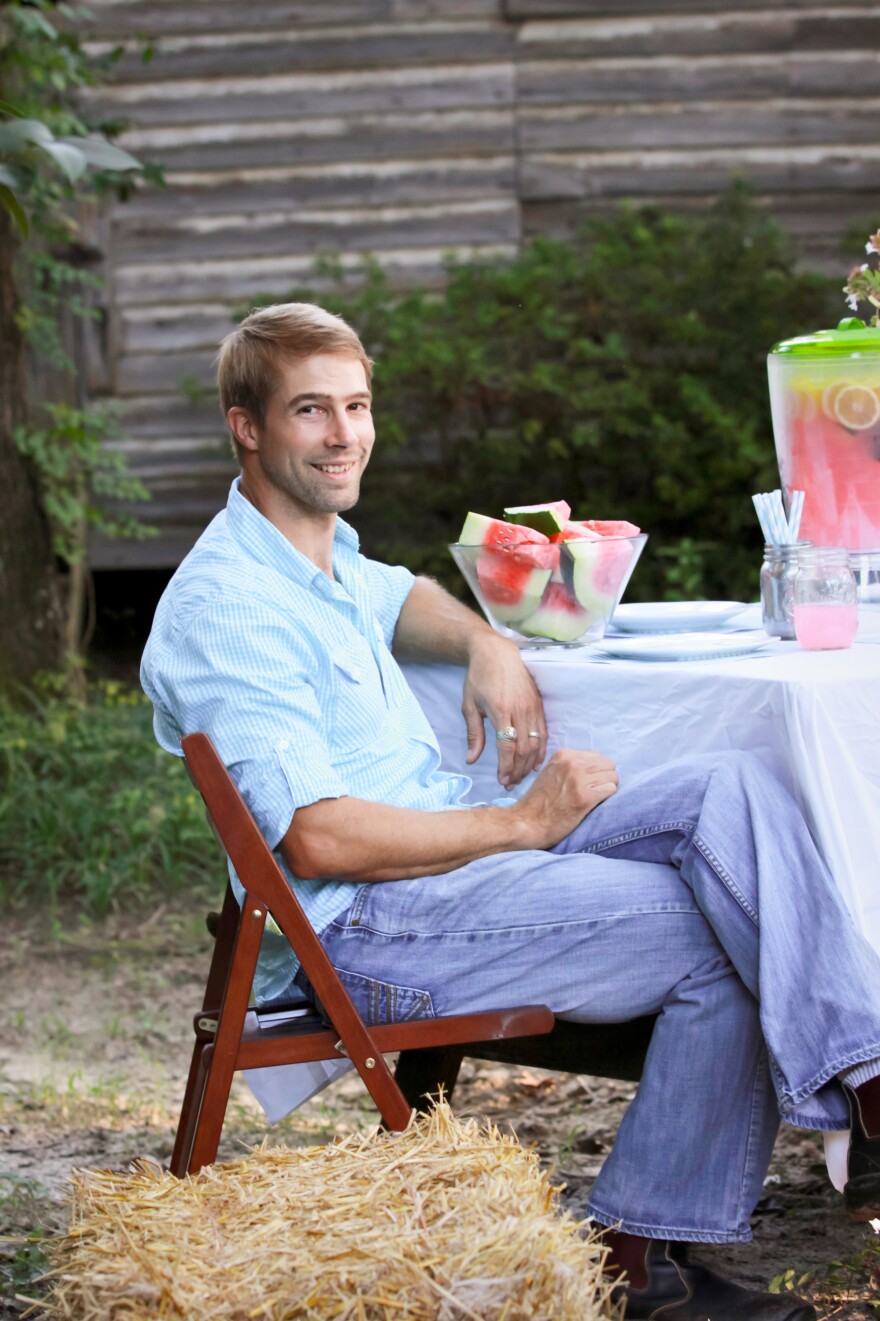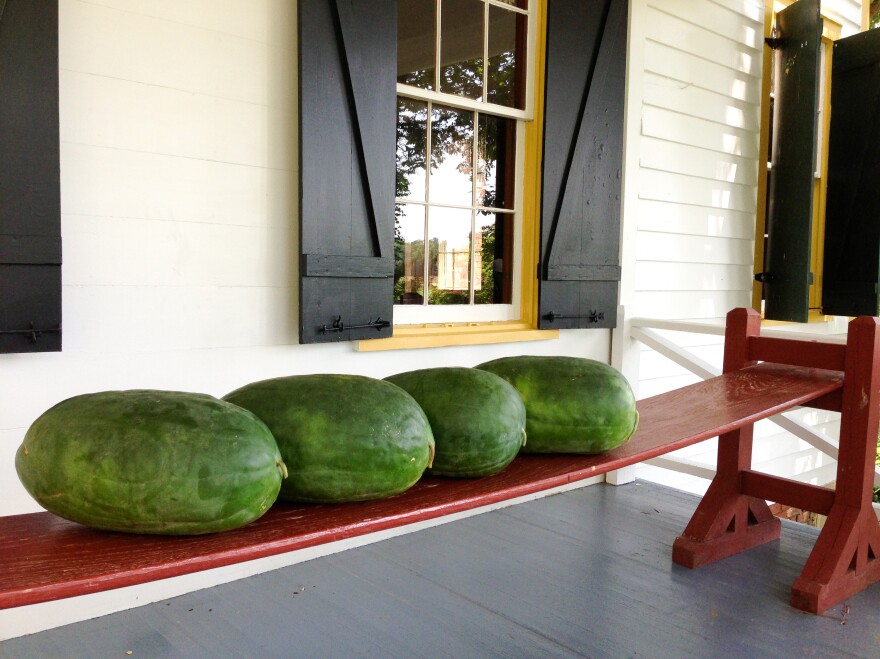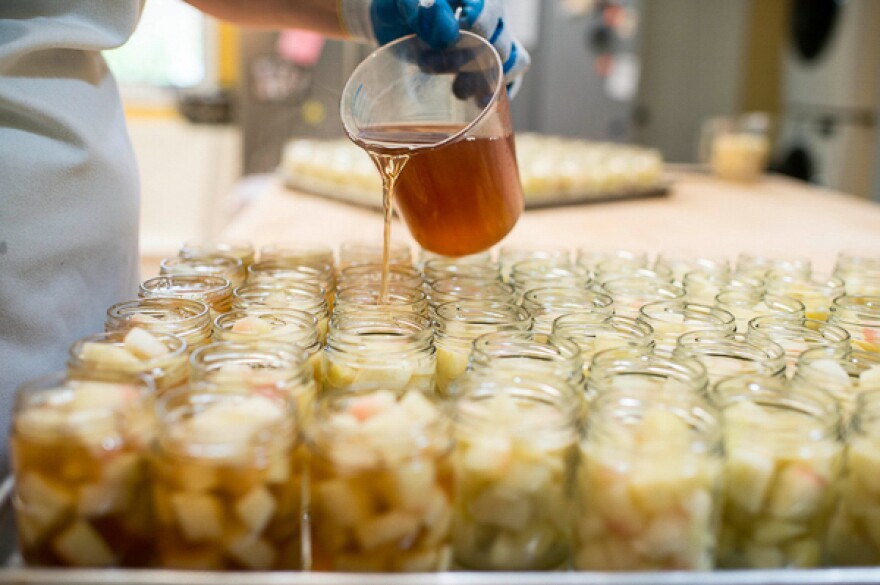The most luscious watermelon the Deep South has ever produced was once so coveted, 19th-century growers used poison or electrocuting wires to thwart potential thieves, or simply stood guard with guns in the thick of night. The legendary Bradford was delectable — but the melon didn't ship well, and it all but disappeared by the 1920s. Now, eight generations later, a great-great-great-grandson of its creator is bringing it back.
The story of the Bradford begins on a prison ship during the American Revolutionary War. It was 1783, and the British had captured an American soldier named John Franklin Lawson and shipped him off to the West Indies to be imprisoned. Aboard the prison ship, the Scottish captain gave Lawson a wedge of watermelon that was so succulent, he saved every seed. When he got home to Georgia, Lawson planted the seeds and grew a popular watermelon. Around 1840, Nathaniel Napoleon Bradford of Sumter County, S.C., crossed the Lawson with the Mountain Sweet. By the 1860s, the Bradford watermelon was the most important late-season melon in the South.

The Bradford boasted fragrant red flesh, pearly seeds and a rind so soft you could slice it with a butter knife. The fruit was more than just a savory summer treat — its sweet juice was routinely boiled into molasses or distilled into brandy for cocktails garnished with fruit and syrup, and the smooth soft rinds were pickled. Home cooks often turned to watermelon molasses to preserve fresh fruit for the winter.
But the oblong, soft-skinned Bradford was never suited to stacking and long-distance shipping. In 1922, the last commercial crop was planted, and the melon wholly gave way to varieties with tough rinds. For the rest of the century, the Bradford survived only because family members went on planting it in their backyards and saving seeds — making sure to plant it at least a mile from any other melon, so that it wouldn't cross-pollinate and lose its purity.
Meanwhile, around 2005, David Shields, a professor at the University of South Carolina, began hunting without much hope for a surviving Bradford melon. Shields is author of Southern Provisions: The Creation and Revival of a Cuisine, and his current mission is to restore antebellum cultivars and foodways. He'd been researching important melons of the 19th century and concluded the precious melon was extinct. Says Shields: "I checked germ plasm banks, seed saver's exchanges, read original seed catalogs from the 1800s, and wrote watermelon growers in the boondocks rumored to have old melons. They tended to have old bad melons, though. I almost lost hope."
That all changed on Oct. 31, 2012, when Shields woke up to an email response from Nat Bradford, a landscape architect in Sumter, S.C., inquiring whether his family's backyard melon was the famous Bradford.
"My family has been maintaining this watermelon in a little field in Sumter, S.C. for well nigh onto 100 years that I know for sure," wrote Bradford. Shields' heart leaped. Not only was it the Bradford — Shields now knew it could be revived.

Though there are literally hundreds of watermelon cultivars in America today — ranging from the supersized Sangria to the delicate Sugar Baby and the common supermarket icebox varieties — the Bradford was in a class all of its own.
"To give you an idea of the splendid sweetness of this melon," says Shields, "its 'brix' measurement is 12.5." Brix is a widely used sweetness rating, and most melons hover around 10, which is already considered very sweet.
Shields implored Bradford to help restore the watermelon to its iconic glory. Bradford had inherited his forefathers' love of farming, and he embraced the idea of reviving his family's sweet melon legacy. In the wet, cool summer of 2013, Bradford took a few mason jars of precious seeds and began to restore the heirloom melon. He adopted a classic way of farming that helps cull the strongest plants. He created small hills, planting 12 seeds to a hill. The 12 sprouts on each hill were thinned to the six strongest, and those were soon culled to the two strongest. Finally, he had 220 hills with two plants per hill, for a total of 440 plants, and the melons thrived. "We grew 465 watermelons that summer," Bradford says proudly.

Then the fun began. He hauled 300 melons to Charleston, where James Beard Award-winning chef Sean Brock, owner of , took 50 and crafted watermelon molasses and pickles to serve at his famous eatery. Another 140 melons were carted to . in Charleston, where co-owner Scott Blackwell and his crew spent 12 hours mashing the fruit and pressing out juice to distill into 143 bottles of heirloom brandy — 750 ml and $79 each — not made since the last century. The brandy was light and smooth, with a fragrant top note of watermelon. Every last bottle sold out.
Bradford was hooked. He saved about 25,000 seeds, packaging some to sell via his website, , and donating a few dozen to NGOs in water-thirsty Bolivia and later, Tanzania, to see if they might grow a refreshing, drought-resistant fruit.

The following year, he hooked up with North Carolina-based April McGreger, owner of , who describes her business thus: "I promote old Southern recipes, fruits, and forgotten flavors, using local ingredients and classic techniques." McGreger grew up in Mississippi with sweet, pickled watermelon rind spiced with clove and cinnamon. She crafted 150 jars of traditional Southern pickled watermelon rinds, as well as watermelon jam. She brought both over to the Slow Food International conference in Turin, Italy, in October of 2014. Once again, the Bradford sold out.
This year, Nat Bradford plans to grow 1,000 watermelons — and then some. He's also growing Bradford collard greens and Bradford okra, and he's trying to breed a cold-hardy peach that can survive the South Carolina winter.
"My hope is to steer my life into a fusion of sustainable farming and landscape architecture," he says. "I grew my first patch of Bradford melons when I was 5 years old. This watermelon is like a kiss from heaven to me."
Jill Neimark is an Atlanta-based writer whose work has been featured inDiscover, Scientific American, Science, Nautilus, Aeon, Psychology Today andThe New York Times.
Copyright 2021 NPR. To see more, visit https://www.npr.org. 9(MDAxODg3MTg0MDEyMTg2NTY3OTI5YTI3ZA004))



